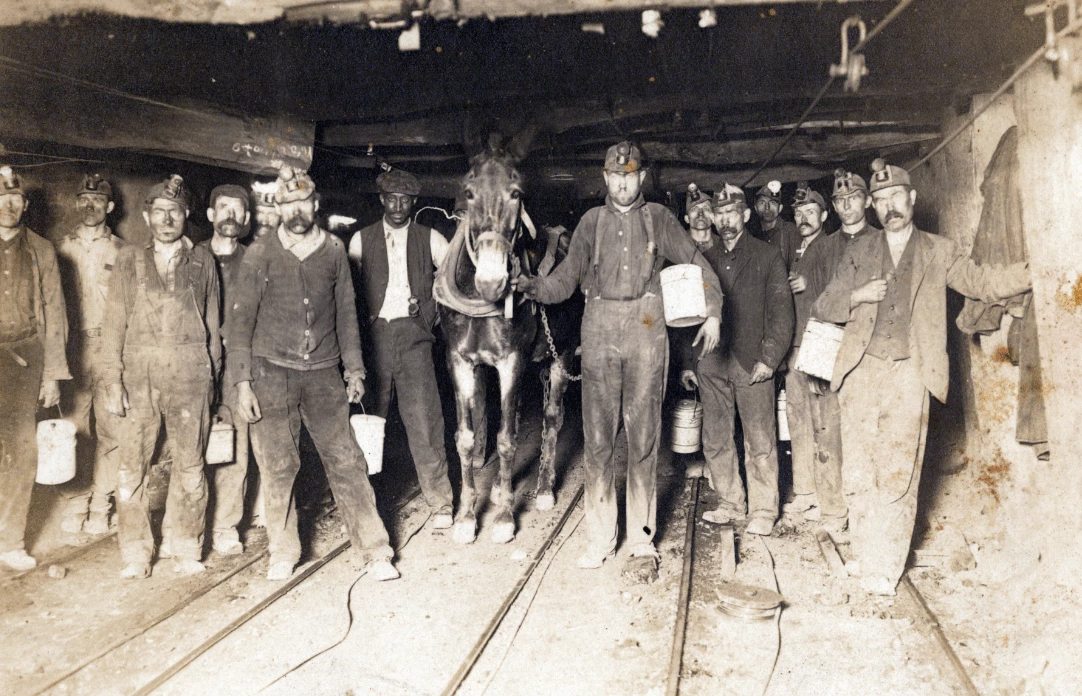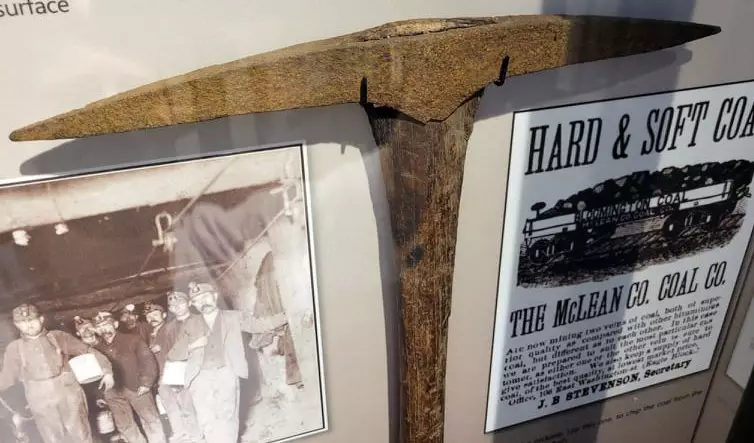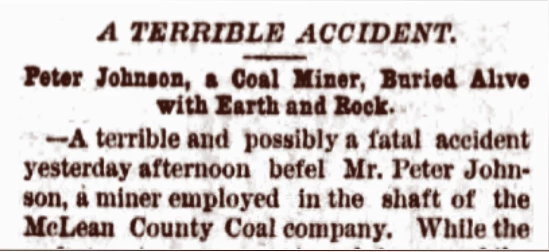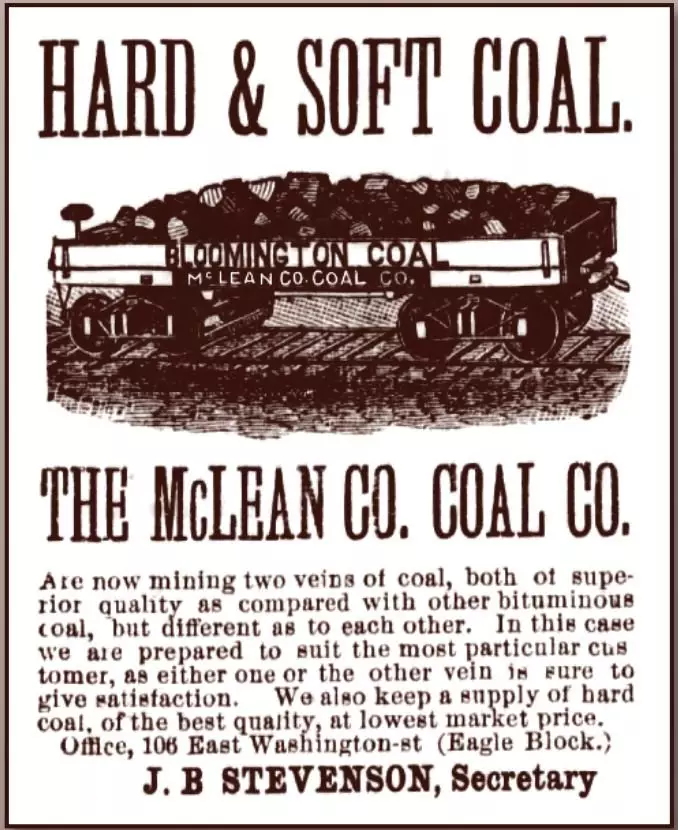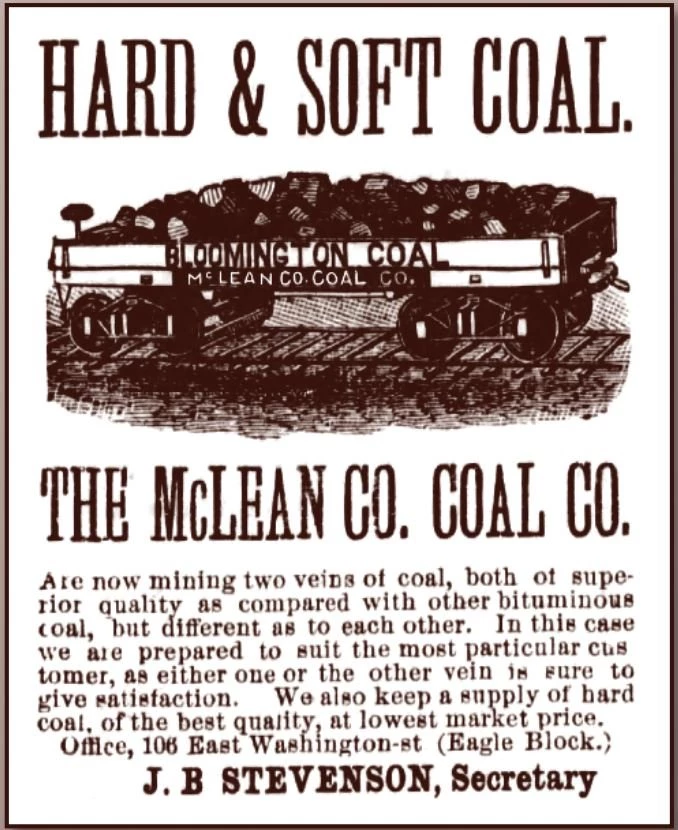Powering the Community
Coal, used for generating electricity and for heating homes and businesses, was discovered beneath Bloomington in 1867. Soon after that coal miners were hired for the dangerous work of excavating it.Featuring:Peter Johnson, (1838 – 1914), coal miner“Mr. Herrick”, gas laborerSwedish immigrant Peter Johnson (1838-1914) worked in the Kewanee coal mines in 1868. But in 1872 an offer too good to pass up was made by owners of the Bloomington Coal Mining Company.
In August of 1873, Peter and his family, along with 29 other families, moved to Bloomington. Once here they learned upsetting news, that they were scabs — labor hired to replace striking workers. But the company had paid their transportation and provided them with a home and work, so they suffered the consequences and made the most of the situation.
Every day Peter traveled hundreds of feet beneath the surface where, using picks and shovels, he and his coworkers did the laborious task of digging coal and loading it into carts.
Peter nearly died in 1884 when a portion of the mine in which he was working collapsed.
He was buried beneath more than two feet of earth and rocks.
“The earth over him gave way and fell upon him, knocking him down and burying him in earth and rocks between two and three feet deep.”
— Bloomington Pantagraph, December 13, 1884
Fortunately other miners dug Peter out of the rubble. Severely hurt, including trauma to his head, he was unable to work for many weeks — time during which there was no money to support his family.
At the time there was no local miners’ union and no compensation for workers who were injured or killed on the job.
How would you imagine either of these situations might affect a miner and his family?
Out of work for months without pay, the likelihood of becoming destitute was high. But members of the Swedish community (Peter resided in Stevensonville, a Swedish neighborhood near the mine) made sure Peter, his wife, and children had what was needed until he was well enough to return to work — which Peter did as soon as possible, knowing that if he was out too long, he might lose his job.
Miner's tallow lamp, circa 1880

Though a flame could ignite mine gases, a source of light was necessary in the pitch black conditions inside the mine. Peter hooked a tallow lamp, like this one used by John Edling, to the soft cap that he wore to work. A lighted wick in the spout was fueled with tallow (animal fat).
Donated by: Harold and Ruth Johnson
2003.06.2
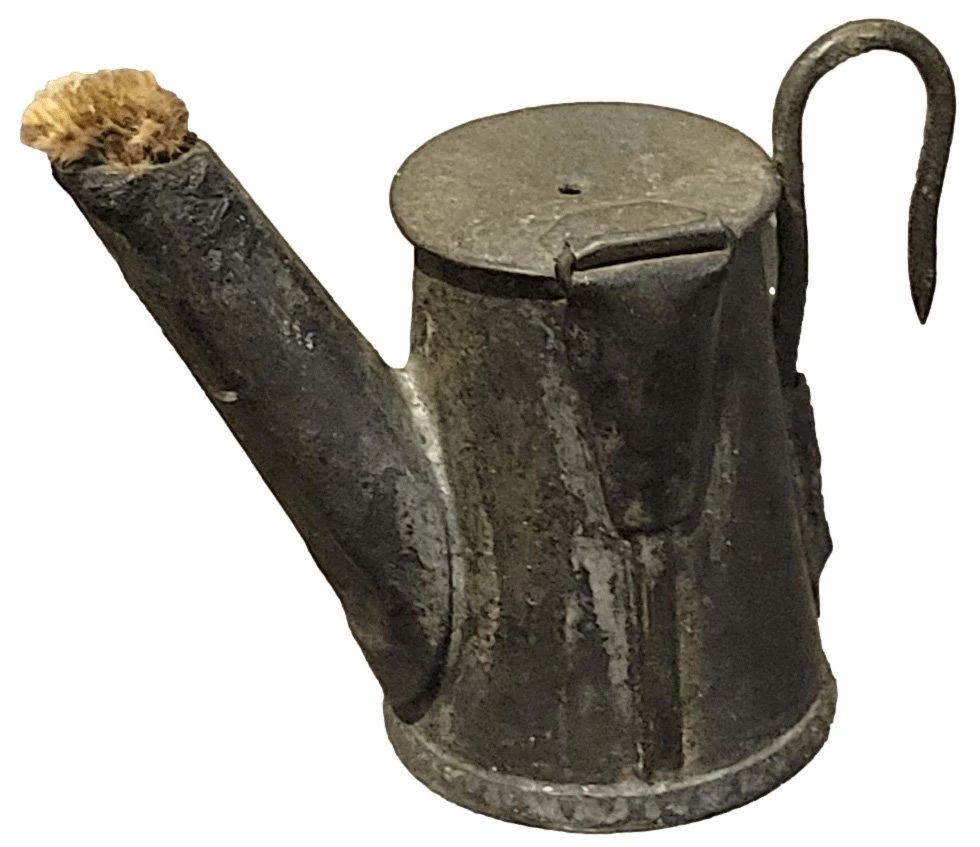
Miner's carbide lamp, circa 1910
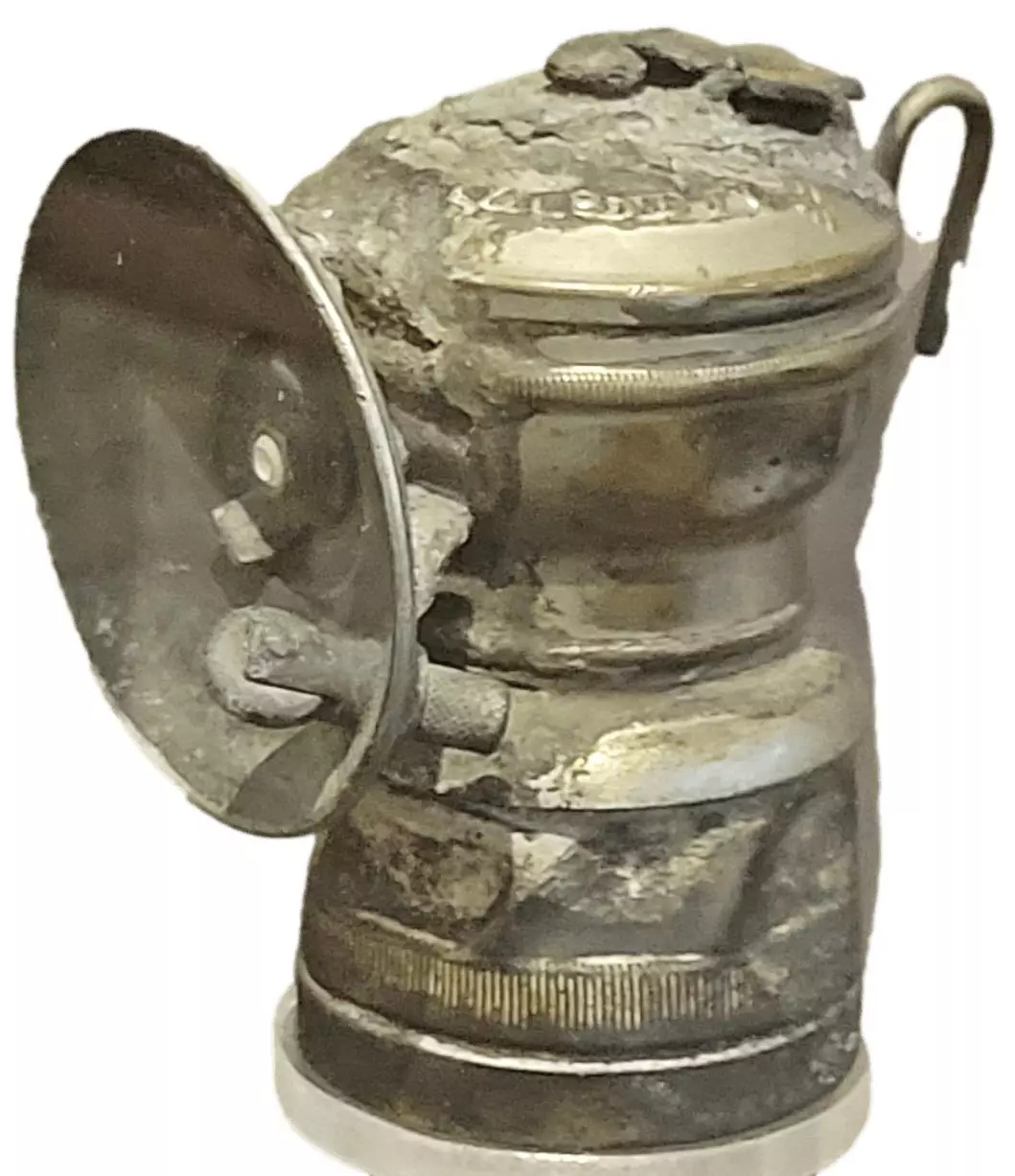
Carbide lamps, like this one used in the mine by John Edling, burned acetylene gas. Developed about 1900, they still created an open flame, but were less likely than tallow lamps to blow out and leave a miner in total darkness.
Donated by: Harold and Ruth Johnson
2003.06.1
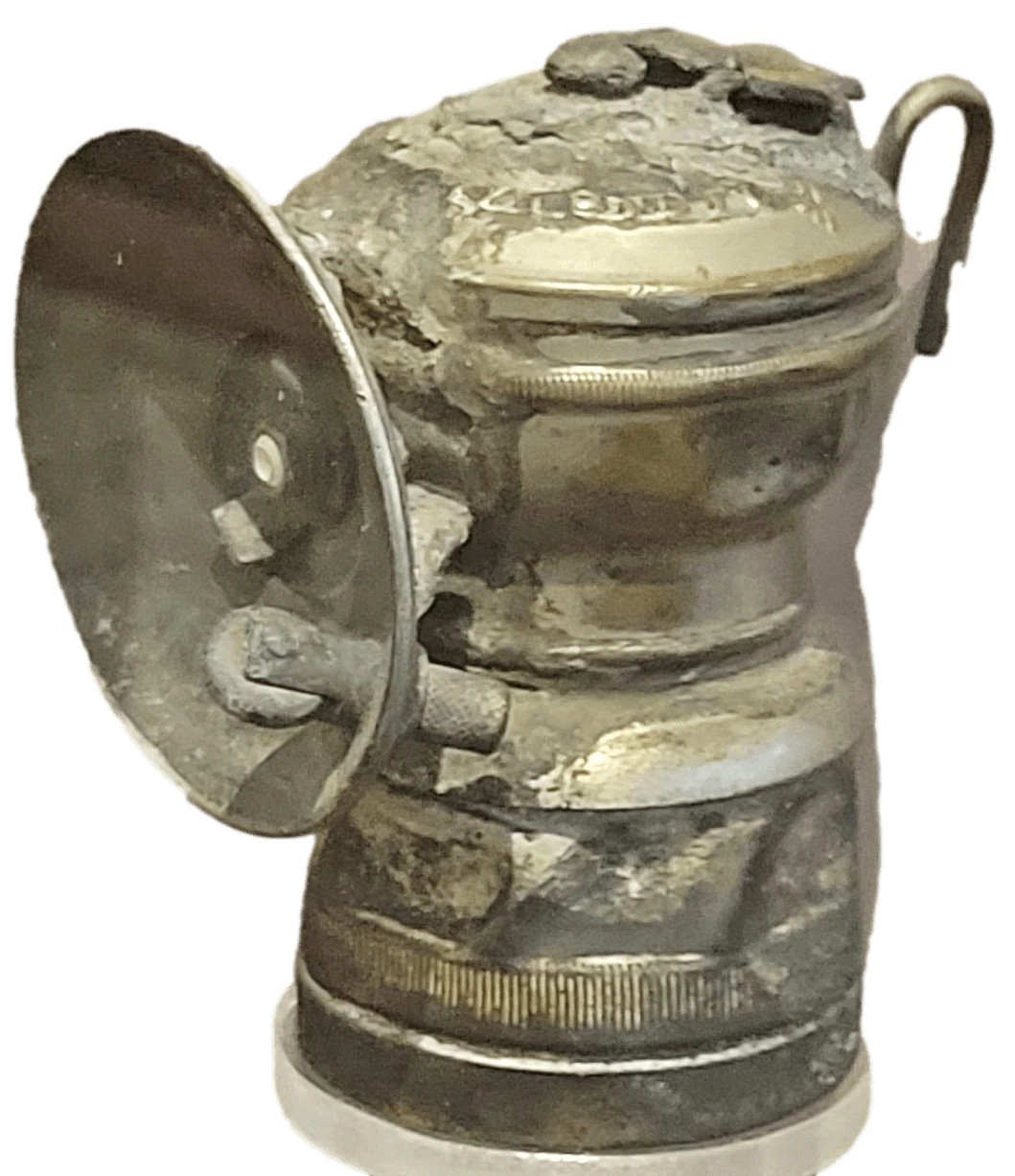
Mr. Herrick
Utility services that could make life easier were added as new technologies made them possible.
When Bloomington’s first gas company was organized in 1856, “Mr. Herrick” was contracted by the owners to purchase the supplies, hire the necessary labor, and oversee the work to install gas lines for $52,000 (equal to $24,800,000 in 2016).
The nameless laborers hired by Mr. Herrick faced the daunting task of hand digging the three miles of trenches that were needed down the principle streets of Bloomington. They also laid the pipelines, including service lines, from the street to each building, and refilled the trenches.
 Making a Home
Making a Home
 A Community in Conflict
A Community in Conflict
 Working for a Living
Working for a Living
 Farming in the Great Corn Belt
Farming in the Great Corn Belt
 Abraham Lincoln in McLean County
Abraham Lincoln in McLean County

